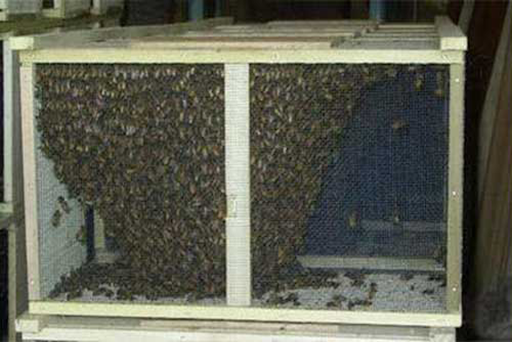
NUCS vs Packages
The choices for replenishing, expanding or just starting out assuming someone isn't ready to give you bees, is ordering commercially produced bees in one of two configurations.
There are "packages or NUCs".
Packages contain up to 3 lbs of worker bees and a mated queen in a queen cage. The queen needs to be released into the colony after the bees have been transferred into a hive body. Generally there is a time delay before the queen begins laying eggs and then brood appearing after that. Packages may be obtained earlier in the spring but their time of buildup takes longer.
NUCs (Nucleus Colony) are plastic ventilated boxes containing an "already" functioning colony with a laying queen, brood, nurse bees, and food. NUCs installed in hive bodies build up very quickly.
We will only provide NUCs as they have proven to be more able to build up population and in return are more productive.
If you are interested only in packages, contact Dick Connor at Red Barn Honey.
www.rbhoney.com
Why Russian Bees
RHBA independent research has found many very favorable and desirable genetic traits in Russian Bees which the organization continues to breed through the efforts of their beekeepers in the US. Some comparisons to other domestic honeybee breeds are these.
- RHBA Queens are prolific egg producers and do increase hive population very quickly.
- They also produce worker bees with demonstrated Varoa hygienic behaviors.
A. Workers will remove V infected developing larva.
B. Worker bees can be observed removing VM from other bees.
C. Queens will naturally interrupt the VM reproductive cycle by cutting back their egg laying at the same time that the VM is looking for bee brood to lay their eggs.
3. Honey production by RHBA bees is demonstrated to be fair superior to other domestic bees.
